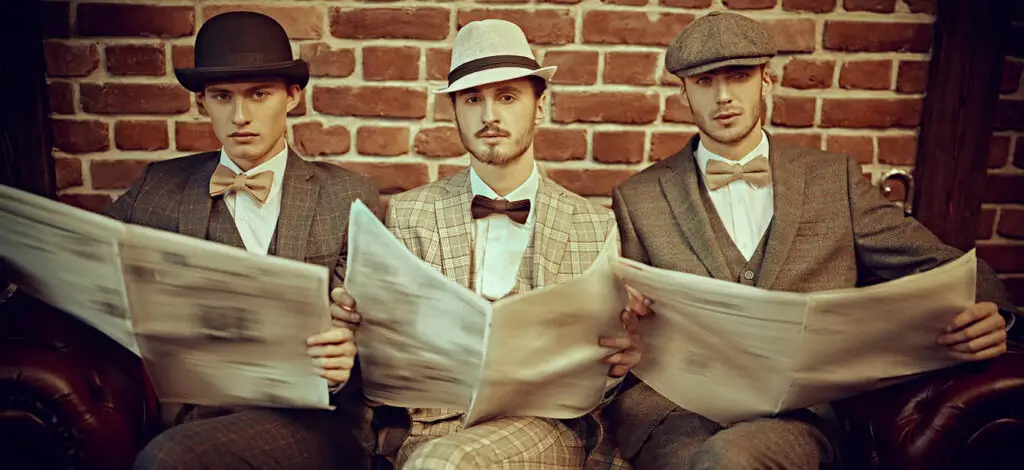
Retro Fashion: Reviving the Past, Redefining the Present
Fashion has always been cyclical, with trends often returning to spotlight decades after their initial debut. Among these enduring movements, retro fashion stands out as a phenomenon that continues to captivate the imagination of designers, consumers, and cultural tastemakers. Defined by its nostalgic nod to the aesthetics of past eras, retro fashion is more than a trend—it’s a celebration of history, individuality, and the artistry of reinvention.
In recent years, retro has transcended the confines of vintage shops and thrift stores, finding a home on high-fashion runways, music festivals, and everyday wardrobes. It’s a cultural movement that bridges the gap between old and new, blending the charm of yesterday with the innovation of today.
What Is Retro Style?
Retro style refers to clothing, accessories, and aesthetics inspired by specific eras of the past, most notably the 1960s, 70s, 80s, and 90s. This style isn’t about mere replication; it’s about reinterpretation. Retro fashion often incorporates modern elements, resulting in a look that feels familiar yet fresh.
At its core, retro style is a paradox. It simultaneously pays homage to the past while challenging contemporary norms, creating a space where tradition and innovation coexist.
The Allure of Retro Style
Why does retro style continue to resonate so deeply with audiences across generations?
- Nostalgia and Storytelling
Retro clothing carries stories—whether it’s the memory of a parent’s favorite outfit or the visual language of a time period that shaped pop culture. Wearing retro pieces allows individuals to connect with the past, creating a sense of continuity in an ever-changing world. - Timeless Design
Certain design elements, such as the clean lines of 60s mod fashion or the bold colors of 80s athletic wear, have an enduring appeal. Retro style capitalizes on these timeless qualities, making them relevant for new audiences. - Individuality and Expression
Retro style often involves mixing and matching pieces from different eras. This creative freedom allows wearers to curate outfits that reflect their unique personality and taste, distinguishing themselves in a sea of fast fashion.
Key Elements of Retro Style
Retro fashion is as diverse as the eras it draws from. Here’s a breakdown of some defining characteristics:
- Bold Patterns and Colors
From psychedelic swirls of the 70s to neon hues of the 80s, retro fashion is unapologetically vibrant. These patterns and colors bring a playful energy that modern minimalism often lacks. - High-Waisted Bottoms
Whether it’s flared jeans from the 70s or mom jeans from the 90s, high-waisted bottoms are a retro staple that has made a major comeback. - Oversized Silhouettes
Jackets with exaggerated shoulders, slouchy cardigans, and roomy overalls evoke the relaxed vibe of past decades while offering contemporary comfort. - Accessories with Personality
Cat-eye sunglasses, chunky jewelry, and vintage hats add a touch of retro flair to any outfit, proving that the smallest details can make the biggest impact. - Footwear Icons
Retro sneakers, such as Adidas Gazelles or Nike Cortez, and platform shoes are perfect examples of how footwear can anchor a nostalgic look.
The Retro Influence in Today’s Fashion
The impact of retro style extends far beyond its vintage aesthetic. It has become a foundational element in many contemporary fashion movements, including one particularly vibrant expression of modern culture: Streetwear outfits.
Although seemingly disparate, retro and streetwear share a common ethos of individuality, rebellion, and storytelling. Take, for example, the resurgence of 90s tracksuits and oversized windbreakers. These pieces, once synonymous with sportswear, have been reimagined as streetwear essentials. Their retro appeal lies in their authenticity, offering wearers a direct link to the past while aligning with today’s aesthetic values.
Similarly, retro sneakers, such as Reebok Classics or Air Jordans, have become cultural icons in their own right. These shoes aren’t just footwear—they’re symbols of eras gone by, recontextualized for a new generation of sneaker enthusiasts.
Retro in Pop Culture
Retro style has found its way into nearly every facet of pop culture, from film and television to music and art. Shows like Stranger Things and movies like Grease have reignited interest in the fashion of bygone eras, while artists such as Harry Styles and Dua Lipa embrace retro-inspired aesthetics in their music videos and personal wardrobes.
This cultural crossover has helped retro fashion remain relevant, allowing it to evolve in tandem with contemporary tastes.
Sustainability and the Rise of Retro
As the fashion industry grapples with the challenges of sustainability, retro style offers an appealing solution. Vintage and thrifted clothing not only reduce waste but also promote a more thoughtful approach to consumption. By choosing retro pieces, consumers can create unique looks while minimizing their environmental footprint.
Moreover, the timeless quality of retro designs ensures longevity, reducing the need for constant wardrobe updates. This aligns perfectly with the growing movement toward slow fashion.
How to Incorporate Retro Style into Your Wardrobe
- Start Small: Incorporate one retro piece, such as a pair of cat-eye sunglasses or a vintage graphic tee, into your outfit.
- Mix Eras: Combine elements from different decades for a look that feels cohesive yet eclectic.
- Focus on Quality: Opt for well-made vintage items that stand the test of time.
- Embrace Layering: Pair retro pieces with contemporary staples, like layering a 70s-inspired jacket over a minimalist dress.
Conclusion
Retro style is more than a fashion choice—it’s a celebration of heritage, creativity, and individuality. By blending the past with the present, retro fashion offers a way to honor history while forging new paths in personal expression.
As it continues to influence modern trends, from the rise of sustainable practices to its subtle integration into streetwear outfits, retro fashion proves that old is truly new again. It’s a testament to fashion’s enduring power to connect, inspire, and transform. Whether you’re donning a 70s jumpsuit or lacing up a pair of retro sneakers, every piece you wear becomes part of a story—a narrative that is as timeless as it is personal.
